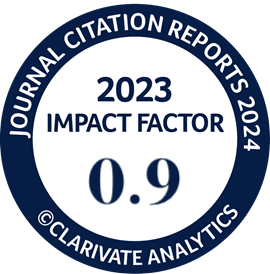Characterization of Metal Fumes and Oxides Across Current Variations in the Shielded Metal Arc Welding (SMAW) Process
DOI:
https://doi.org/10.4186/ej.2025.29.6.13Keywords:
welding fumes, welding metal oxides, arc currents, shielded metal arc welding (SMAW), welding nanoparticlesAbstract
This study explores the formation of metal fumes during the Shielded Metal Arc Welding (SMAW) process using SS400 low carbon steel, 6 mm in thickness, in accordance with JIS G3101 and AWS D1.1/D1.1M standards. The research was conducted across a range of electrical currents, from 60A to 130A. To analyze weld profiles, fume morphology, elemental composition, and metal fume concentrations, scanning electron microscopy coupled with energy-dispersive X-ray spectroscopy (SEM-EDS), X-ray diffraction (XRD), and inductively coupled plasma mass spectrometry (ICP-MS) were utilized. The results revealed that the lowest concentration of metal fumes, measured at 3.961 mg/m³, occurred at a welding current of 70A, with iron (Fe), zinc (Zn), and nickel (Ni) as the predominant elements. Conversely, the highest fume concentration of 18.483 mg/m³ was found at 110A, characterized by elevated levels of iron (Fe), manganese (Mn), and nickel (Ni). The analysis also identified the presence of various metal oxides, including iron oxides (hematite and magnetite), titanium dioxide (rutile and anatase), silicon dioxide (SiO2), and copper (II) oxide (CuO). These findings highlight the importance of selecting appropriate welding currents, particularly 70A and 90A, to achieve optimal weld quality while reducing exposure to hazardous fumes.
Downloads
Downloads

Authors who publish with Engineering Journal agree to transfer all copyright rights in and to the above work to the Engineering Journal (EJ)'s Editorial Board so that EJ's Editorial Board shall have the right to publish the work for nonprofit use in any media or form. In return, authors retain: (1) all proprietary rights other than copyright; (2) re-use of all or part of the above paper in their other work; (3) right to reproduce or authorize others to reproduce the above paper for authors' personal use or for company use if the source and EJ's copyright notice is indicated, and if the reproduction is not made for the purpose of sale.








